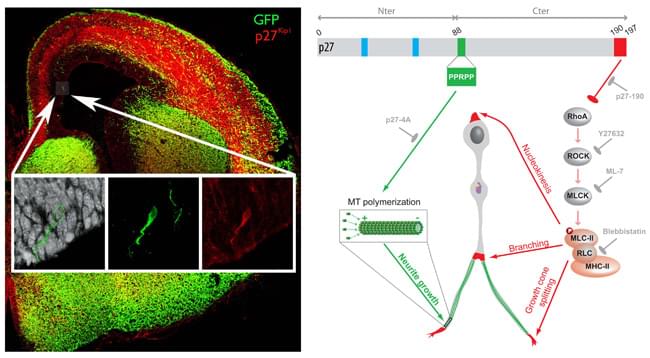As outlined in a study published in Developmental Cell, researchers have discovered a novel function for p27 in the control of interneuron migration in the developing cerebral cortex.
The cerebral cortex is one of the most intricate regions of the brain whose formation requires the migration and integration of two classes of neurons: the projection neurons and the interneurons. These neurons are born in different places and use distinct migration modes to reach the cortex. While several signaling pathways involving various molecules have already been associated with projection neuron migration, the molecular mechanisms that control interneurons migration remain elusive.
In this study, researchers unveiled a novel activity of p27—a protein initially described for its activity as cell cycle regulator—in dynamic remodelling of the cell skeleton. This skeleton, named cytoskeleton, underlies tangential migration of interneurons in the cerebral cortex. Juliette Godin, primary researcher states: At the molecular level, p27 acts on two cytoskeletal components, the actin and the microtubules. It promotes nucleokinesis and branching of the growth cone through regulation of actine. In addition, it promotes microtubule polymerisation in extending neurites. Both activities are required for proper tangential migration of interneurons in the cortex.
